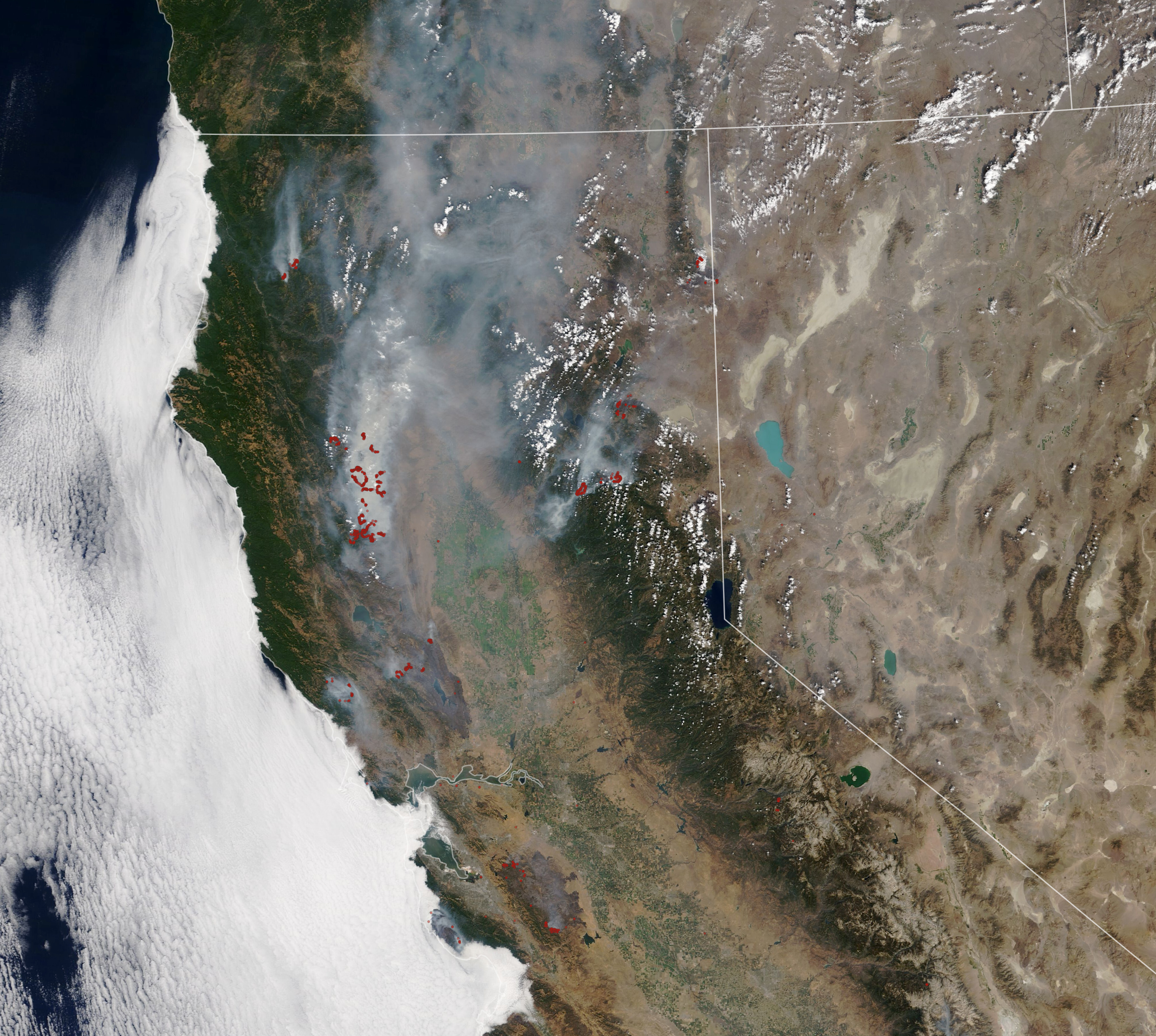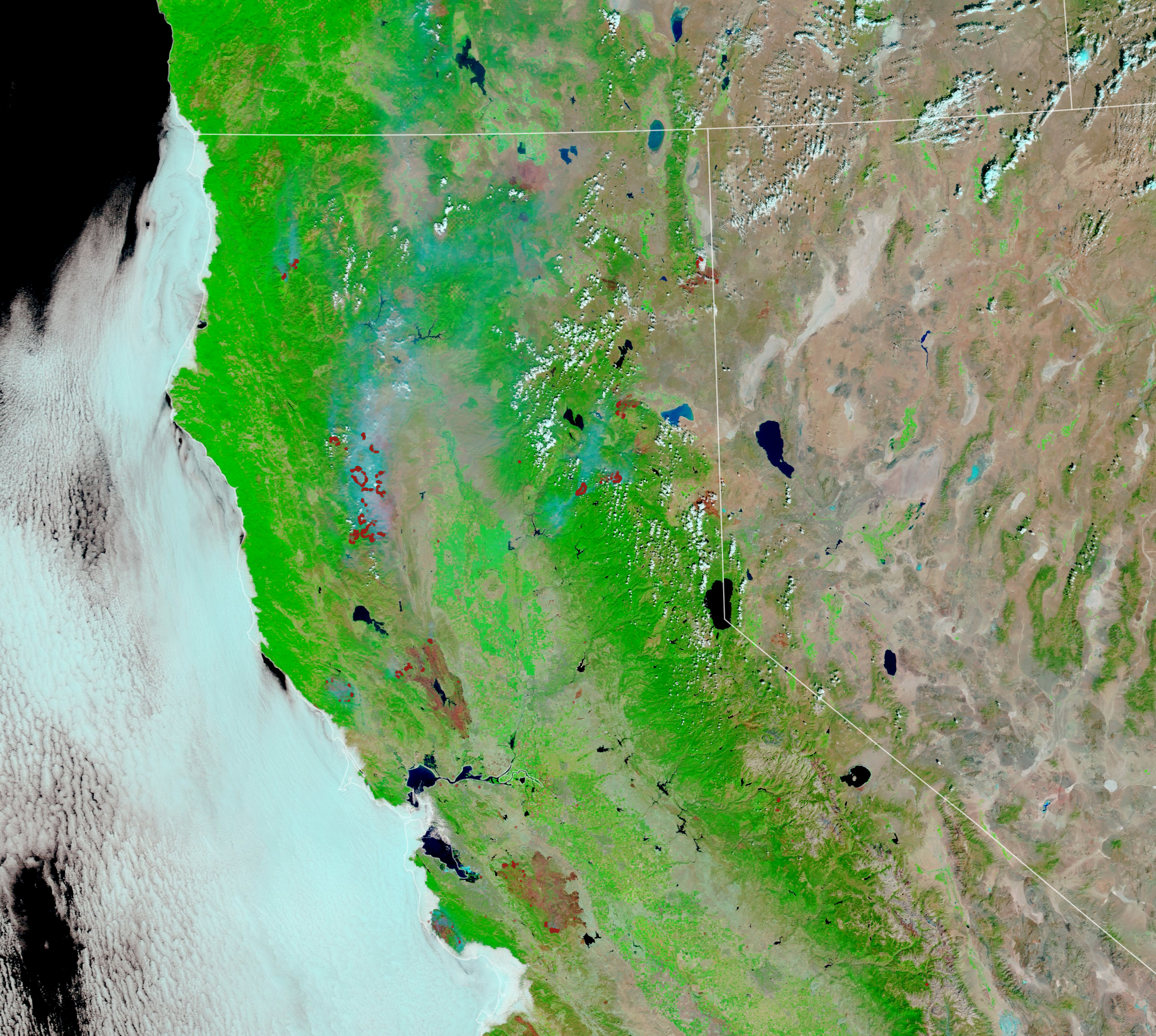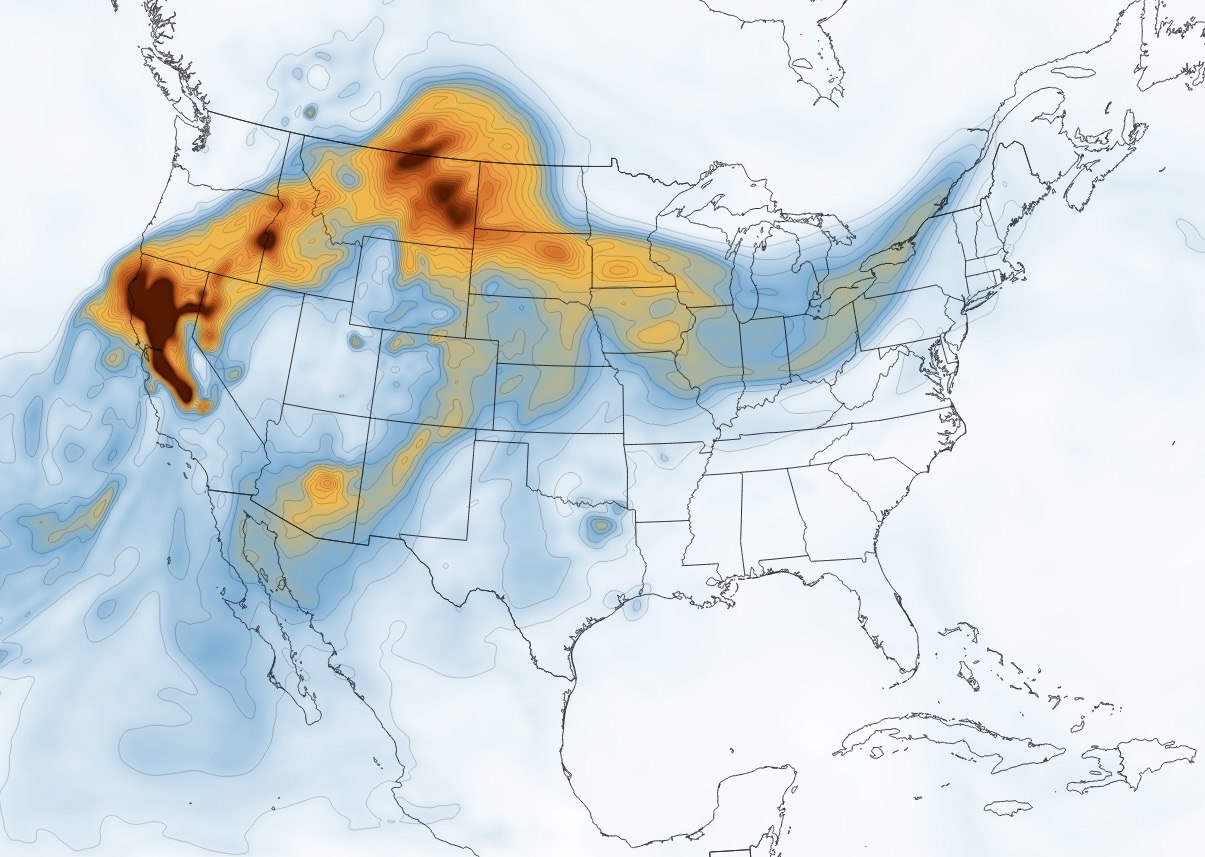
The wildfires raging across California have left burn scars visible from space.
Images captured on Wednesday (Aug. 26) by NASA's Terra satellite show the extensive damage inflicted by the state's two biggest ongoing blazes, the LNU Lightning Complex near Santa Rosa and the SCU Lightning Complex near San Jose.
Each fire had charred more than 360,000 acres (145,000 hectares) as of Thursday (August 27), making them the second- and third-largest wildfires in California history, science writer Kasha Patel of NASA's Earth Observatory noted in a description of the newly released imagery.
Related: Raging California wildfires spotted from space (photos, video)

The state's largest-ever wildfire, the Mendocino Complex, blackened more than 459,000 acres (185,000 hectares) in 2018. It's possible that record could fall; the LNU Lightning Complex and the SCU Lightning Complex are both still burning, and each was just 33% contained as of Thursday.
The current California fires have strongly affected the air as well as the land. The blazes have sent a huge plume of black carbon particulates, or soot, eastward across much of the northern United States, a newly devised map shows.
"The black carbon map comes from the GEOS forward processing (GEOS-FP) model, which assimilates data from satellite, aircraft, and ground-based observing systems," Patel wrote in the same image description. "In this case, GEOS-FP assimilated fire and aerosol observations with meteorological data on air temperature, moisture, and winds to project the behavior and extent of the plume."
Get the Space.com Newsletter
Breaking space news, the latest updates on rocket launches, skywatching events and more!

The LNU Lightning Complex and the SCU Lightning Complex were spawned by a "lightning siege" that has now tallied about 14,000 individual strikes in California since it began on Aug. 15, officials with the California Department of Forestry and Fire Protection (CalFire) wrote Friday (Aug. 28) in its daily wildfire report.
"During this time period, there have been more than 700 new wildfires, which have now burned over 1.38 million acres [560,000 hectares]," CalFire officials wrote. "The significant acreage burned makes the fires collectively larger than the state of Delaware. In this siege, there have been seven reported fatalities and nearly 2,100 structures destroyed."
The NASA Earth Observatory is part of the Earth Observing System Project Science Office at the agency's Goddard Space Flight Center in Greenbelt, Maryland.
Mike Wall is the author of "Out There" (Grand Central Publishing, 2018; illustrated by Karl Tate), a book about the search for alien life. Follow him on Twitter @michaeldwall. Follow us on Twitter @Spacedotcom or Facebook.
Join our Space Forums to keep talking space on the latest missions, night sky and more! And if you have a news tip, correction or comment, let us know at: community@space.com.

Michael Wall is a Senior Space Writer with Space.com and joined the team in 2010. He primarily covers exoplanets, spaceflight and military space, but has been known to dabble in the space art beat. His book about the search for alien life, "Out There," was published on Nov. 13, 2018. Before becoming a science writer, Michael worked as a herpetologist and wildlife biologist. He has a Ph.D. in evolutionary biology from the University of Sydney, Australia, a bachelor's degree from the University of Arizona, and a graduate certificate in science writing from the University of California, Santa Cruz. To find out what his latest project is, you can follow Michael on Twitter.









